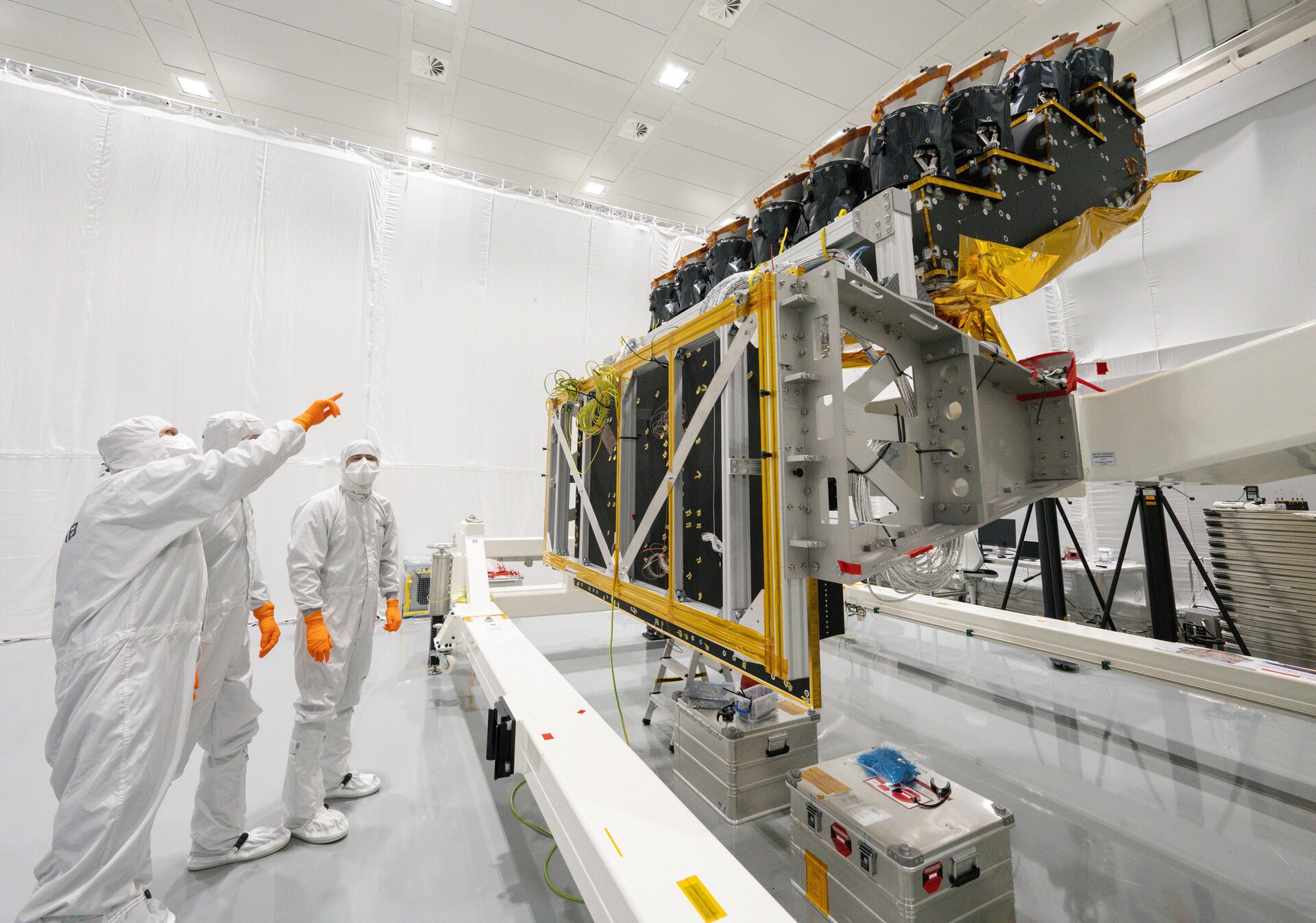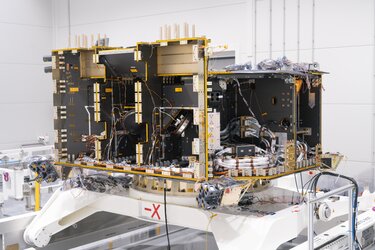

Plato’s 24 newly installed cameras – side view
Engineers at OHB, Germany, inspect Plato’s newly installed 24 cameras on the spacecraft’s optical bench, the structure that keeps all cameras firmly pointed in the right direction.
Together the 24 identical, ultra-sensitive eyes will stare at a large area of the sky and hunt for terrestrial planets. Two more so-called ‘fast cameras’, will be installed in the coming weeks.
Plato will use its cameras simultaneously to survey the sky and discover exoplanets that orbit stars similar to our Sun, searching for potentially habitable worlds.
The 24 cameras are arranged in four groups of six elements that have the same field-of-view. The lines of sight of the four groups are offset by an angle of 9.2°. With this arrangement, the cameras can survey a very large area of the sky, more than 2000 square-degrees, at once. The 24 identical cameras will make images every 25 seconds, while the two ‘fast’ cameras will make them every 2.5 seconds.
Each camera is equipped with four CCD light-sensors for a total of 81.4-megapixel images per camera, resulting in two-billion-pixel images for the overall spacecraft. These will be the largest images ever for a space mission.
[Image description: On the left, three people in white overalls, with white masks and caps, are looking at Plato’s instrumentation, on the right of the picture. The engineer in the foreground is indicating in the direction of the space equipment, which appear to be about twice as tall as the people in the picture. It consists of a black four-stepped-platform that supports the cameras. Because of the side view, only 9 out of the 24 installed cameras are visible. The cameras resemble cylinders flaring at the top, not unlike big ice-cream cones. Each cylinder is wrapped in black material; the top flare has a metallic finish and a white lid.]





